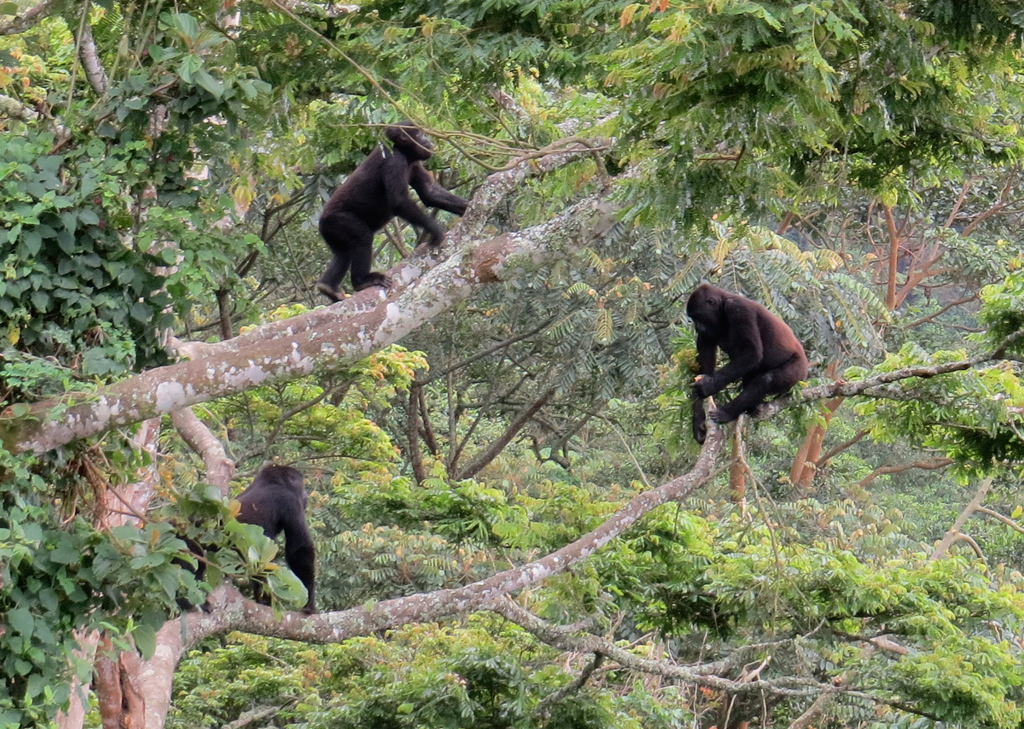Rehabilitating Grauer's Gorillas at GRACE
Categories: Journal no. 53, Democratic Republic of the Congo, Grauer's Gorilla, Gorilla Journal
The Gorilla Rehabilitation and Conservation Education (GRACE) Center is the world's only sanctuary for Grauer's gorillas orphaned by poaching and the illegal pet trade. At GRACE Center in Kasugho, North Kivu, Democratic Republic of the Congo (DRC), we currently care for 14 gorillas (11 females, 3 males) ranging in age from 18 months to 16 years. Since we began receiving gorillas in 2010, one new gorilla has arrived each year, on average. New arrivals come with various problems including psychological trauma, malnutrition, and even serious physical injuries like broken bones. Nearly all gorillas are younger than weaning age upon arrival. Despite being an uphill battle for the gorillas, we have thus far experienced good success with our rehabilitation efforts.
There is no instruction manual for how to rehabilitate Grauer's gorillas, as it's never been done before. Our approach is to provide a social and physical environment that is as natural as possible to help the gorillas heal and to prepare them for the possibility of reintroduction back into the wild. Because zoological institutions are the world’s experts in caring for gorillas, we consult with several AZA-accredited zoos in the USA and benefit from their expertise in gorilla veterinary medicine, nutrition, facility design, behavioural research, outreach education, and animal management. Six zoos have sent 24 experts to GRACE to provide onsite assistance and staff training. Zoo experts also provide year-round support by participating in advisory groups that directly work with our DRC staff every month. In DRC, we also partner with Gorilla Doctors for veterinary care and operate an ongoing preventative health care program for the gorillas and our staff.
The GRACE gorilla orphans live in a single, integrated social group that is led by a 16-year-old female, since the oldest male is still young (8 years old). Once the health of a new gorilla has stabilized and he or she is behaviourally ready, the gorilla is introduced into the group. We work within the group hierarchy to ensure new gorillas are accepted first by the alpha female, an approach that has proven 100% successful thus far. There are multiple adult females, and every new gorilla has fortunately formed a close surrogate-type relationship with one of the older females. Surrogates engage in mothering behaviours such as carrying and sleeping with their 'adopted' gorilla and they also protect them within the group. These relationships are likely a key reason for our successful integrations, since they provide strong support as young ones transition back to life with gorillas. Some surrogate relationships have even lasted for several years. Being a surrogate benefits the adult females as well by giving them mothering experience. Once in the group, gorillas are managed using protected contact (i.e. no hands-on human contact) in order to let them be gorillas.
GRACE Center is located in former Grauer's gorilla habitat, so the environment is ideal for gorillas. In 2015, we opened a 10-hectare forest enclosure and the gorillas now spend their days in this habitat. This space allows them more freedom to forage on their own, rather than relying solely on provisioned food. We monitor the gorillas throughout the day from observation towers located around the perimeter of the forest and have observed them engaging in new wild-like behaviours, such as building nests in trees and coordinating group travel.
Though the forest provides food for the gorillas, we still need to provision them in order to meet their dietary needs. In the past, we collected vegetation from the surrounding forest, but to create a more sustainable approach, we started a gorilla food farm in July 2016. We are now cultivating wild gorilla foods, such as Aframomum and Pennisetum, as well as a wide variety of vegetables. This past year, we also worked with an animal nutritionist to create a recipe for biscuits that serve as a nutritional supplement for the gorillas. The biscuits are made with locally sourced ingredients and are baked daily at GRACE for the gorillas.
An important part of our mission is to give Congolese the opportunity to learn about Grauer's gorillas and to observe the orphans living at GRACE. Our intent is to foster pride in the fact that these gorillas are only found in eastern DRC and a commitment to conservation. We host over 200 people at GRACE each month, including schoolchildren and various community groups, through our local visitors program. We also work with surrounding communities on developing and implementing conservation actions such as tree planting (>2500 trees planted in 2015-2016). We are continuing to develop our educational outreach and plan to expand this work in 2017.
Sonya Kahlenberg and Jackson Kabuyaya Mbeke
To receive updates about GRACE, please visit <link http: www.gracegorillas.org _blank external-link-new-window external link in new>our website and follow us on Facebook (GRACE4gorillas) or Twitter (@GRACEgorillas).

